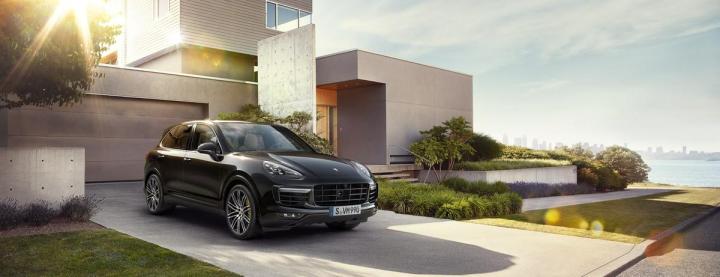
Porsche, embodying the role of big brother under the Volkswagen Group banner, was quick to reply. At the 2015 Detroit Auto Show, company R&D executive Wolfgang Hatz told Car and Driver that the next-generation Cayenne would be significantly faster than the Bentayga, saying, “Our car will be much quicker on the road.”
Because Bentley CEO (and former Porsche R&D boss) Wolfgang Durheimer likely has a V12 to work with, Hatz conceded that his British stablemate might be a bit more impressive in the top end. Overall? He believes Porsche has it in the bag.
“Our Cayenne is always very, very quick,” he said. “It is doing 300 km/h [186 mph]. I think if [Durheimer] is doing 2 to 3 km/h more, then why not? He’s doing that with a 12-cylinder.”
Despite a disadvantage in displacement, the future Cayenne will likely have an advantage in weight. Hatz teased that the next-gen vehicle will shed “at least” the same percentage of mass as the new Audi Q7, which will lose 716 pounds (about 13%) for 2016 model year.

If our math is correct, that means the new Cayenne, which weighs 4,817 lbs today, should lose around 630 lbs. Power will reportedly come from an all-new turbocharged V8 as well.
Due out in 2017, the new version has some big shoes to fill. The automaker displayed a tweaked version of the to-be-replaced Turbo S (pictured) in Detroit, which produces a ridiculous 570 horsepower from its twin-turbo, 4.8-liter V8. The added power allows it to sprint from 0 to 60 mph in just 3.8 seconds, and top track speed is now 176 miles per hour.
The added power comes via redesigned turbos that reside inside the exhaust manifolds, but the automaker didn’t stop there.
The brakes, suspension, and electronic power delivery systems have all been improved, and result in a 911-esque Nordschleife lap time of 7:59.74. With that feat, Porsche has wrestled the production SUV lap record from the Range Rover SVR Sport, which completed the Nurburgring’s North Loop in 8:14 last July.
Coming so soon after Bentley’s announcement, is there any chance that Porsche’s claims are a coincidence? Hatz wouldn’t confirm or deny, but if you think this turn of events was unplanned, there’s some beachfront property in Arizona you might be interested in.
Editors' Recommendations
- The best luxury cars
- Hybrid model will be ‘highest performance 911 of all,’ Porsche CEO says
- The 2020 Porsche Cayenne Coupe is an exercise in form-over-function design


